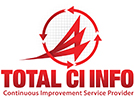What is a well-defined process?
Sometimes we get the question: What does working with us look like? That will vary depending on the business, the problem or opportunity they have, and the size of the organization; however one of the very first discussions we have is: What process is at the heart of the current problem you want to solve or what process is at the heart of the opportunity you want to focus on. Whether you want to focus on the length of time it takes to develop a proposal or how long your customer service team takes for a support call, it is critical to understand what steps and actions are needed to complete the desired outcome.
The dictionary defines a process as a series of actions or steps taken in order to achieve a particular end.
We want to go one step further and talk about a Well Defined Process which has to include three elements:
First, we want to make sure it is documented – is there a piece of paper, electronic file, something that shows the process in the entirety that defines what the process is.
Second, it needs to be repeatable and followed consistently.
And third, there is predictability within the results. When we receive the data from this process, we can predict with some probability what will happen in the future.
Let’s dig a little deeper into these three items:
Let’s say that you are an event planner, and you have 5 staff members who help plan events. You want to improve your process for your customers, as you have seen some inconsistent feedback.
Documentation
Documentation is going to vary greatly from business to business. Depending on the maturity of the process, it may be very basic such as a white board drawing or a series of post it notes on the wall. We understand that a brand new process needs to be discovered, so it may not be “well-defined” right off the bat but documentation will be needed as a point of reference to others. Sometimes we “know” our processes so well, that we don’t have supporting documents because we assume that everyone knows what to do – this is a dangerous trap to fall into as you won’t be able to collect the data you need, and often leads to inconsistencies and mistakes that you won’t be able to catch right away.
You hold a staff meeting and talk about all the tasks that are completed for an event quote. You make a document describing each step and make a checklist having the employees fill out what date each task was completed.
.
Repeatable
Are the same process steps taken by everyone in your organization when completing this task? The same steps should be taken, no matter who is executing the process. The input and output are the same, regardless of who is doing it. The only way to know there is repeatability is to measure it – the process owner needs to collect and report data from the process. Perhaps the document mentioned above is a checklist, and each person enters the date they follow each step – data then will include how many days each step took. The collection of data needs to be a natural part of the business system and should have system checks in place. This will give you the assurance that the process is being correctly followed using fact-based information.
You require all 5 employees to follow the above checklist in the same order and update you each week. If a new employee came in, they could follow the checklist and get the job done.
Predictable
Once the process steps are complete, we can review the results. This will depend on what we were trying to measure, of course. Did they meet the customers expectations? Super! Did they not meet expectations? Then we can look at the defects and find out what went wrong. How often are defects happening? Why are the defects happening? When we collect meaningful data, it gives you the tools to observe and correct these defects. Fact based data will also give you assurance that the process is producing the results you want and it is being followed correctly by your team. We should be able to predict what will happen going forward based on the data that we collected.
After you review the results, you see that most of your requests are turned around in less than 5 days – you can now predict that when someone calls in for a quote, they will receive an answer in 5 days. There are a few defects but as you review you notice they are for larger weddings. You break the larger weddings into their own process and can see that data shows a quote in 10 days or less. You now have the right data to give your customers a timeframe that is predictable.
As you can see, there is a lot of thought and effort that goes into creating a well-defined process. A well-defined process is a necessary condition for long term sustainable process improvement. It can help you improve your business model, catch inconsistencies and meet the expectations of your customers. If you would like to look at your processes and examine how we can help, let’s have a cup of coffee – on me!

Leave A Comment